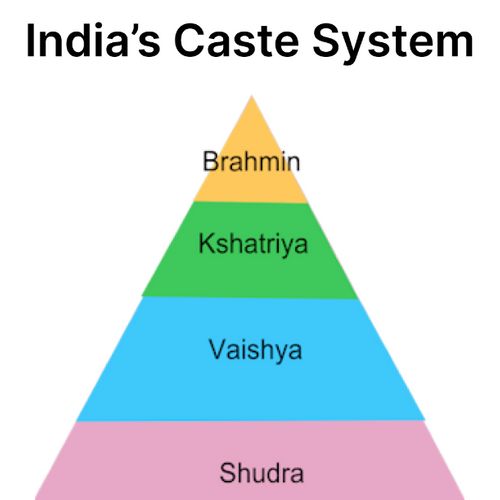India’s caste system: banned but still very much alive
Jan 21, 2023 · 3 mins read
0
Share

[Part 1]
The caste system is a form of social hierarchy that is unique to India and has existed for more than 3000 years. It has been banned in India since Independence but still exists in Indian society. Let’s understand the caste system and its current application.
Save
Share
The caste system is the oldest form of social stratification in India. Followers of Hinduism were divided into 4 castes - Brahmins, Kshatriyas, Vaishyas, and Shudras. Dalits were not included as a part of society and were considered outcastes.
Save
Share
The origin of this stratification comes from an old Hindu law book called Manusmriti. The Manusmṛiti, also known as the Mānava-Dharmaśāstra or Laws of Manu, is one of the many legal texts in the Dharmaśāstras (treatises on law and conduct) of Hinduism.
Save
Share
The religious theory says that Varnas were formed from the body parts of Lord Brahma. Brahmins came from his head, Kshatriyas from his arms, Vaishyas from his thigh, and Shudras from his feet. Dalits weren’t a part of this. But it doesn’t mention how castes were formed.
Save
Share

Save
Share
Difference between Varna and Jati/Caste - Varnas were related to one’s occupation and could be changed according to one’s talent/skills/intellect. Caste/Jati was based on one’s birth. So caste would depend on your family.
Save
Share
Groups were formed on the basis of Karma (work) & Dharma (duty). Brahmins were at the top of the system & were the intellectuals/priests/teachers; Dalits would do all menial tasks. Kshatriyas were the warriors/rulers, Vaishyas were traders/farmers, and Shudras were laborers.
Save
Share
There were societal restrictions and rules for each group. A lower caste person could not come near or touch a higher caste person or touch food or other items of consumption. They were not allowed to enter the house of the higher one or other places like sacred temples.
Save
Share
These groupings were not rigid until the 18th century. Social identities were flexible and one could move from one caste to another. A farmer could become a ruler or a ruler to become a priest. There was social mobility and no rigid restrictions.
Save
Share
Later, with colonial rule and the introduction of the census, it all changed. The British government introduced the census to simplify Indian society and made caste India’s defining feature. Later, the Indian government had to introduce policies to enable social mobility.
Save
Share
0